Disney has some explaining to do.
A while ago, we asked members of the BuzzFeed Community their creepiest behind-the-scenes movie facts. Here are 17 genuinely unnerving dark movie facts that freaked me out.*
*We also used some facts from this Reddit thread.
Note: This post discusses death and animal cruelty.
1. The 1982 German adventure film Fitzcarraldo was a notoriously troubled production. Filmed in Peru, it used Indigenous people from the Amazon as extras...some of whom died in the process. But the horrific details around its filming don't end there. Director Werner Herzog had such a contentious relationship with star Klaus Kinski that he literally tried to burn Kinski to death.
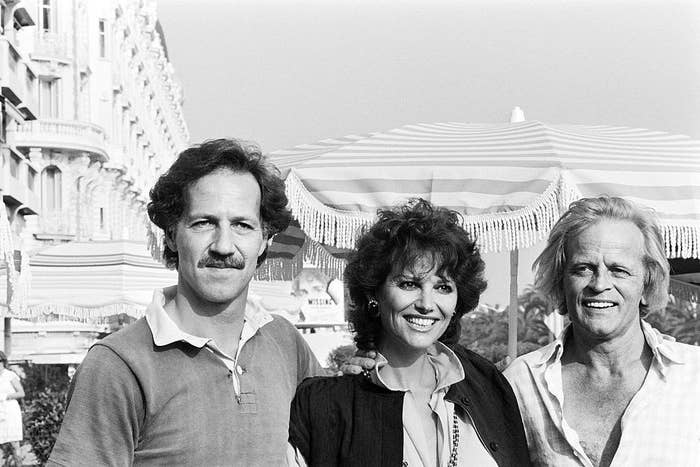
Ralph Gatti / AFP via Getty Images
Herzog has admitted to trying to set Kinski's house on fire with him inside — Kinski only survived because his dog attacked Herzog before he could do it. According to Herzog, Kinski also wanted to kill him.

Jean-louis Atlan / Sygma via Getty Images
2. This isn't the first time the director and actor went at it. Herzog said that while filming an earlier collaboration, 1972's Aguirre, Wrath of God, he pointed a gun at Kinski — who had just threatened to walk off set — and threatened to kill Kinski and then himself.
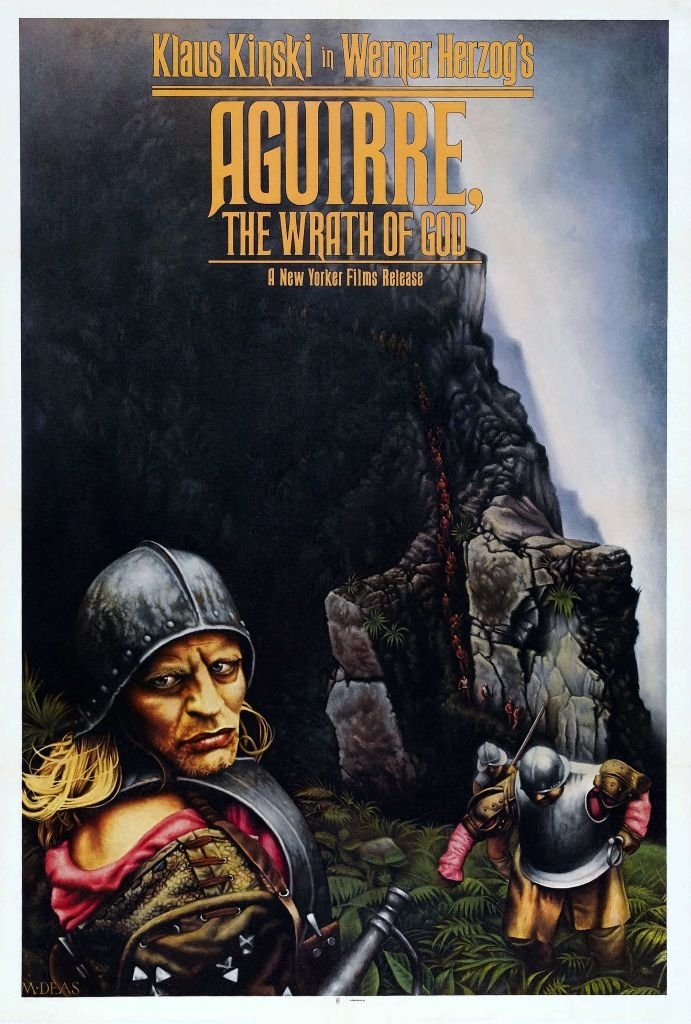
LMPC via Getty Images
3. You may remember the superrrrr-creepy scene from A Clockwork Orange where Alex gets his eyes held open by the terrifying device seen below. Well, it turns out that it was just as harrowing to film: Actor Malcolm McDowell had his cornea sliced by the device and went temporarily blind, despite being assured beforehand that it was safe. He told the Guardian, "When we shot it, the lid-locks kept sliding off my eyelids and scratching my cornea. When the anesthetic wore off, I was in such pain, I was banging my head against a wall. But [director] Stanley [Kubrick] was mainly concerned about when he would be able to get his next shot."
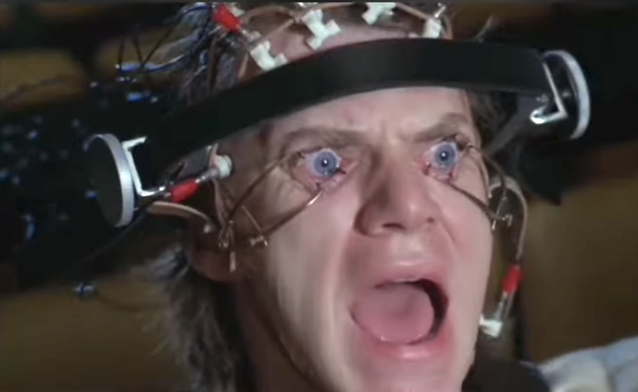
Warner Bros. / Columbia-Warner Distributors
4. On the set of The Exorcist, director William Friedkin would reportedly fire guns and blast unsettling music before takes to make the actors look more startled, and would sometimes slap them to make them look angry. One of the stars, Ellen Burstyn (who called Friedkin a "maniac"), also permanently injured her back in one scene where her character was thrown to the ground. Burstyn said she warned Friedkin that she was being pulled by the rig too hard, but instead of cutting when she was hurt, he directed the cinematographer to focus on her. The take ended up in the film.

Warner Bros. / Getty Images
—Suggested by davti92
Friedkin responded to this claim by saying that Burstyn was hurt but he doesn't consider it an injury, since she didn't take time off or file an insurance claim. He said, “If I hadn’t let the stuntman do that with the force that he did it, she would have had to do it over and over and over again. ... I would rather have had one [take] that risked hurting her a little."
5. It's estimated that during the filming of the 1925 silent film Ben Hur: A Tale of the Christ, over 100 horses died. Some died during the dangerous chariot racing that also allegedly claimed the life of a stuntperson, but others died after one of the directors, B. Reeves Eason, reportedly decided that any injured horses would simply be shot.
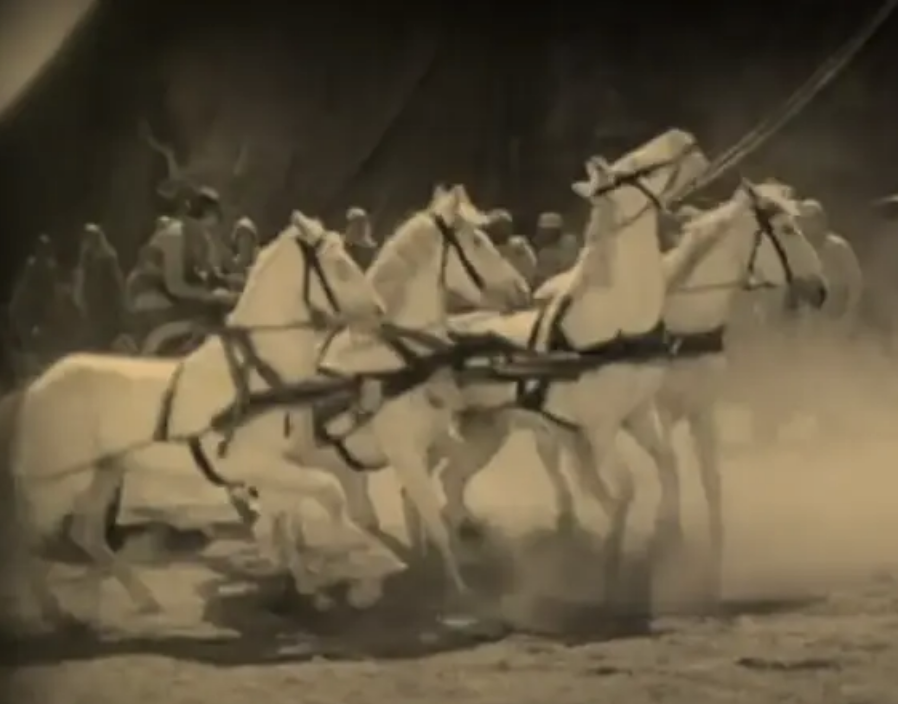
Metro-Goldwyn Mayer
6. Similarly, 1936's The Charge of the Light Brigade used a method of trip wiring called the "running W" in order to get horses to fall during its charge scene. The filmmakers reportedly trip-wired 125 horses, and 25 of them are said to have died or been put down as a result of it.
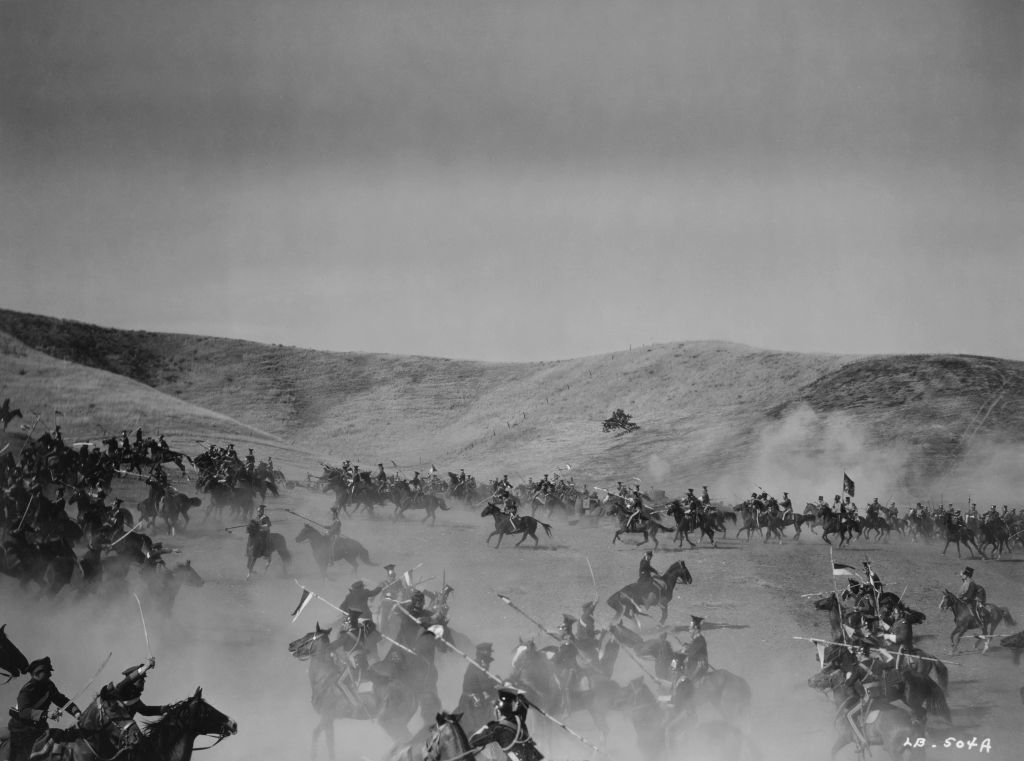
Warner Bros. / FPG / Archive Photos / Getty Images
7. In fact, this, along with an incident during the filming of 1939's Jesse James where a horse (though some sources report it was two horses) was essentially blindfolded and made to run off a cliff to its death, led to widespread animal cruelty rules on set and the famous disclaimer, "No animals were harmed in the making of this film."
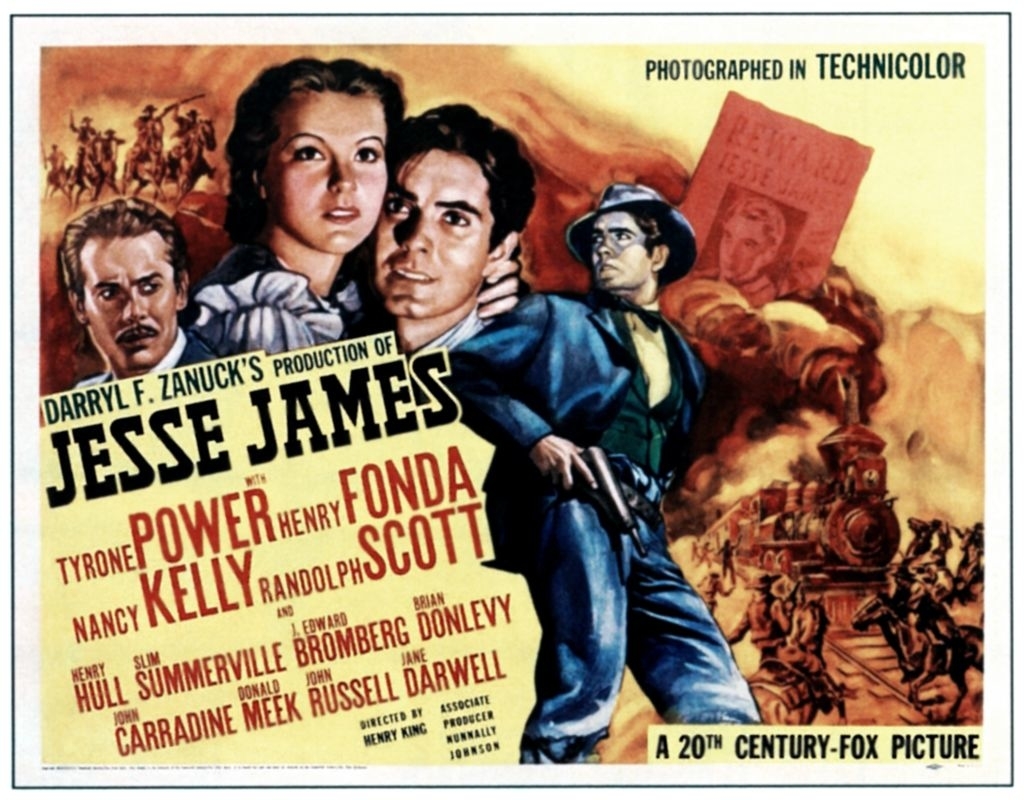
LMPC via Getty Images
8. Despite the new animal cruelty rules, a number of lemmings were purposely killed in 1958's Disney documentary White Wilderness, popularizing the myth that the rodents engage in mass suicide. As it turns out, the filmmakers reportedly pushed the lemmings off the cliff to fake the shot. In fact, kids were allegedly paid to capture and bring lemmings to Canada (where lemmings are not native) in order for them to be killed for the film.
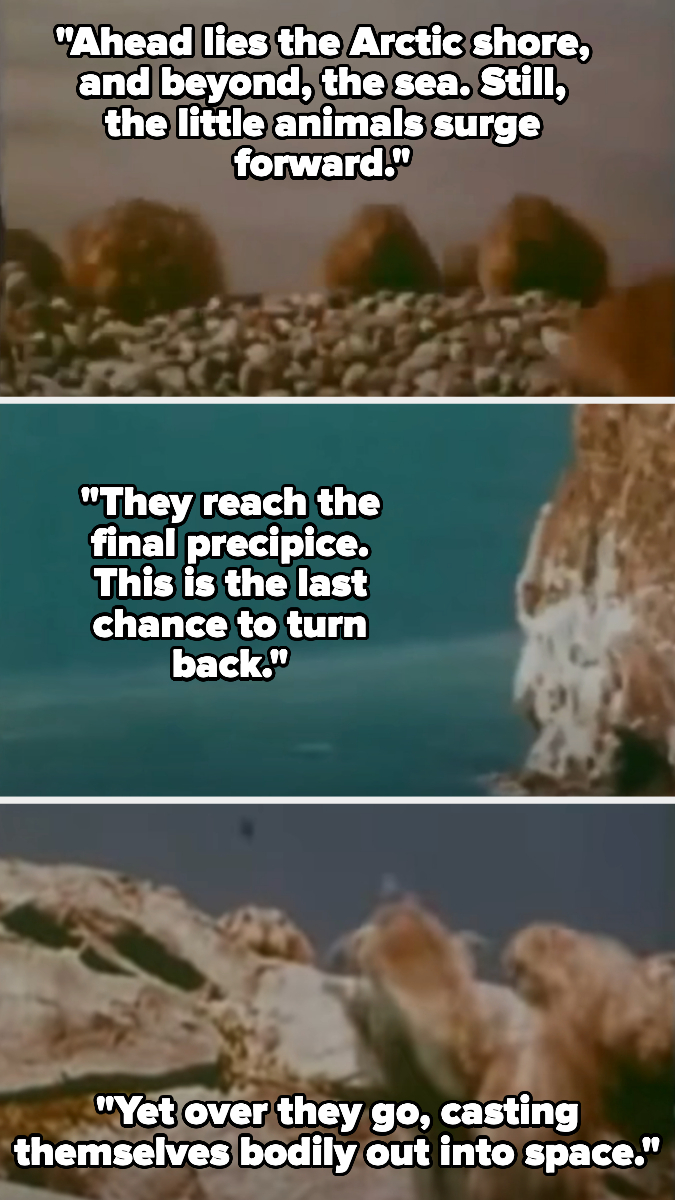
Disney
9. It wasn't just animals that suffered due to a lack of regulation in early Hollywood; a lotttt of stuntpeople died too, including four during the filming of 1928's The Trail of ’98. They died when their boats went over rapids — and two of their bodies were reportedly never found.
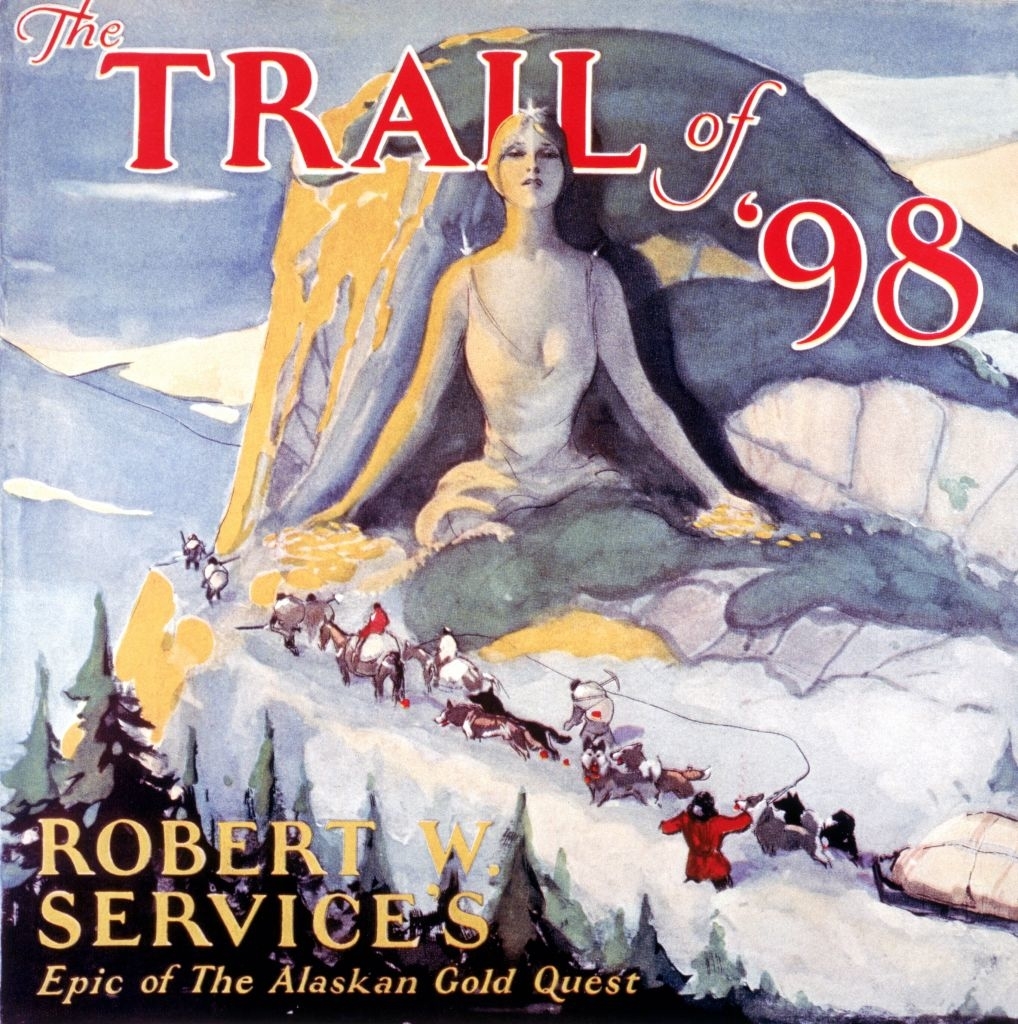
LMPC via Getty Images
10. One of the earliest movie deaths occurred in 1914, when star Grace McHugh and camera operator Owen Carter were killed while filming Across the Border. When McHugh's boat capsized, Carter jumped in to rescue her. He reportedly pulled her to a sandbar, but they were pulled down by quicksand and drowned. Their bodies were not recovered for multiple days. The saddest part? The scene had already been filmed, and this was a reshoot that was only taking place because the earlier copy had been damaged. Carter was posthumously named a Carnegie Hero for his rescue attempt.
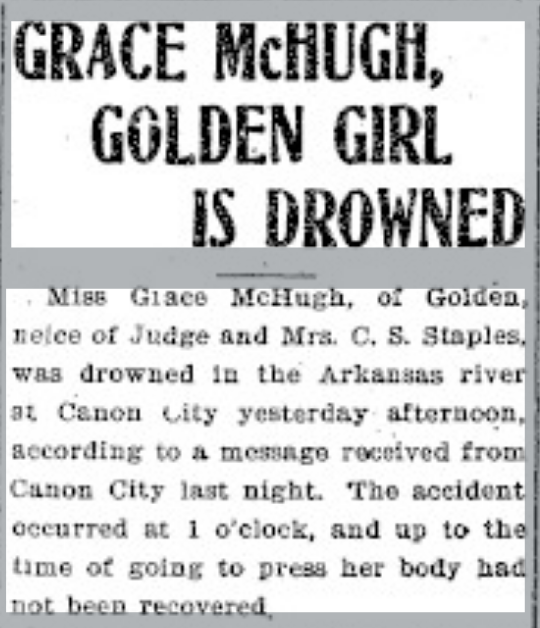
11. Three extras reportedly died on the set of 1928's Noah’s Ark during the dangerous flood scene, which saw over 600,000 gallons (the exact amount is contested) of water being sent down spillways to simulate the deadly flood. Cinematographer Hal Mohr actually reportedly walked off set when director Michael Curtiz ignored his warnings about how dangerous the stunt was.
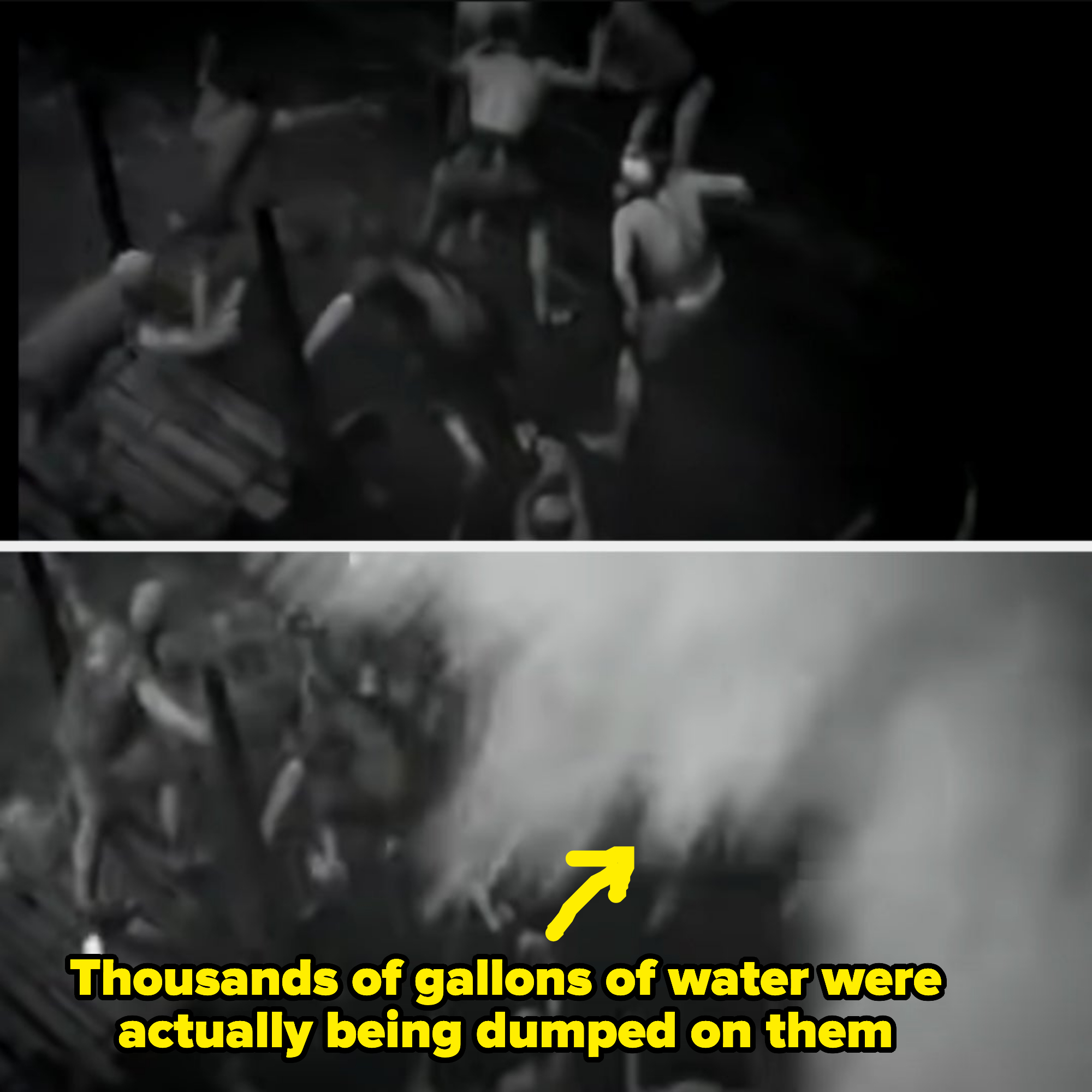
12. Because aircraft technology was also new during early Hollywood days, there were also a bunch of deaths during that time that involved airplanes. One of the worst was during the filming of 1930's Such Men Are Dangerous, when 10 crew members (including the director) died after two planes collided during aerial filming. Only five bodies were recovered.
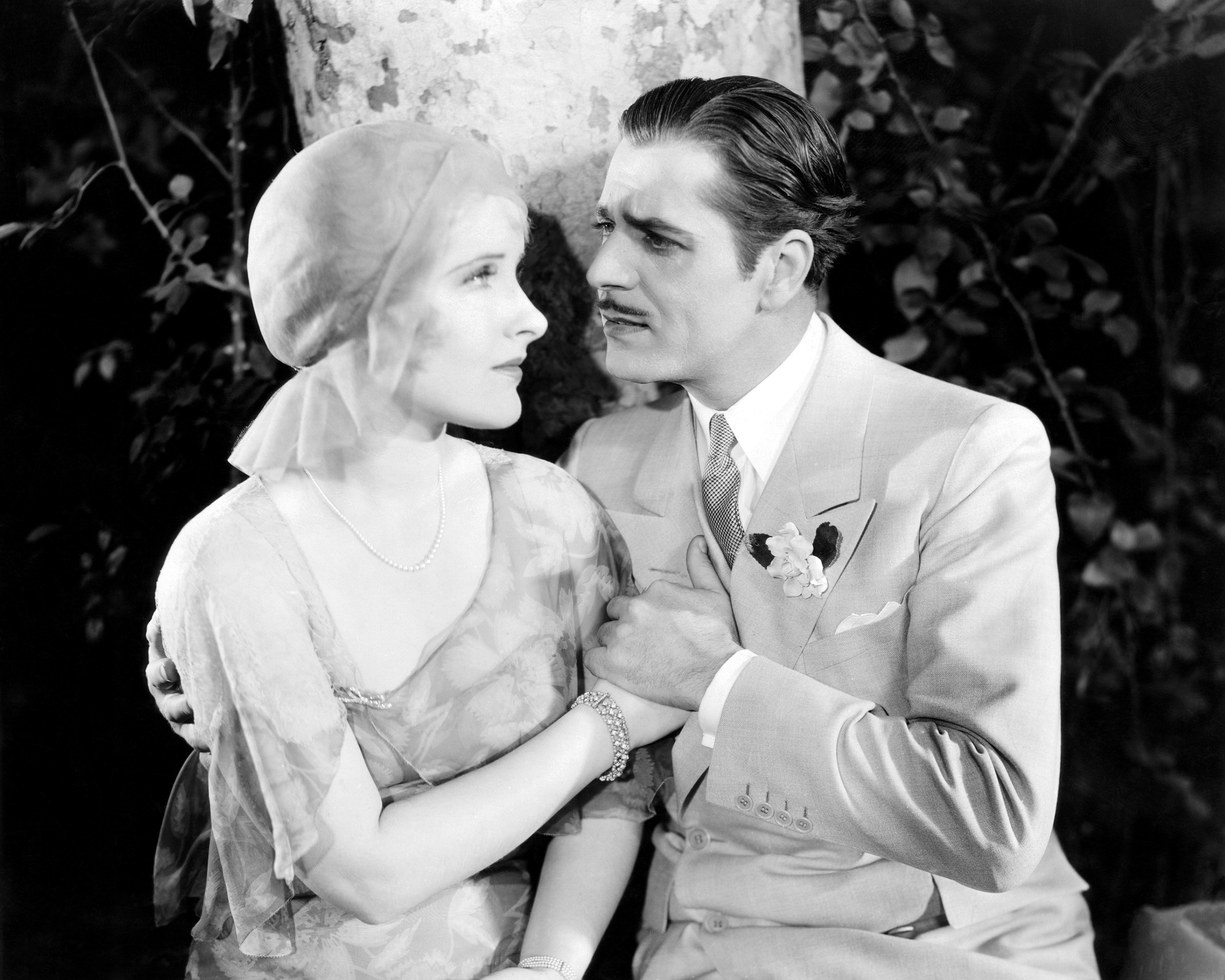
20th Century Fox, TM and Copyright / Courtesy Everett Collection
13. Three "stuntpeople" (according to IMDb, they were extras with no stunt experience who were used as stuntpeople) died during the notoriously dangerous filming of the 1941 Western They Died With Their Boots On, one by impaling himself on a sword when he was knocked off his horse. These deaths apparently occurred during the first few days of filming and were reportedly accompanied by 80 injuries.
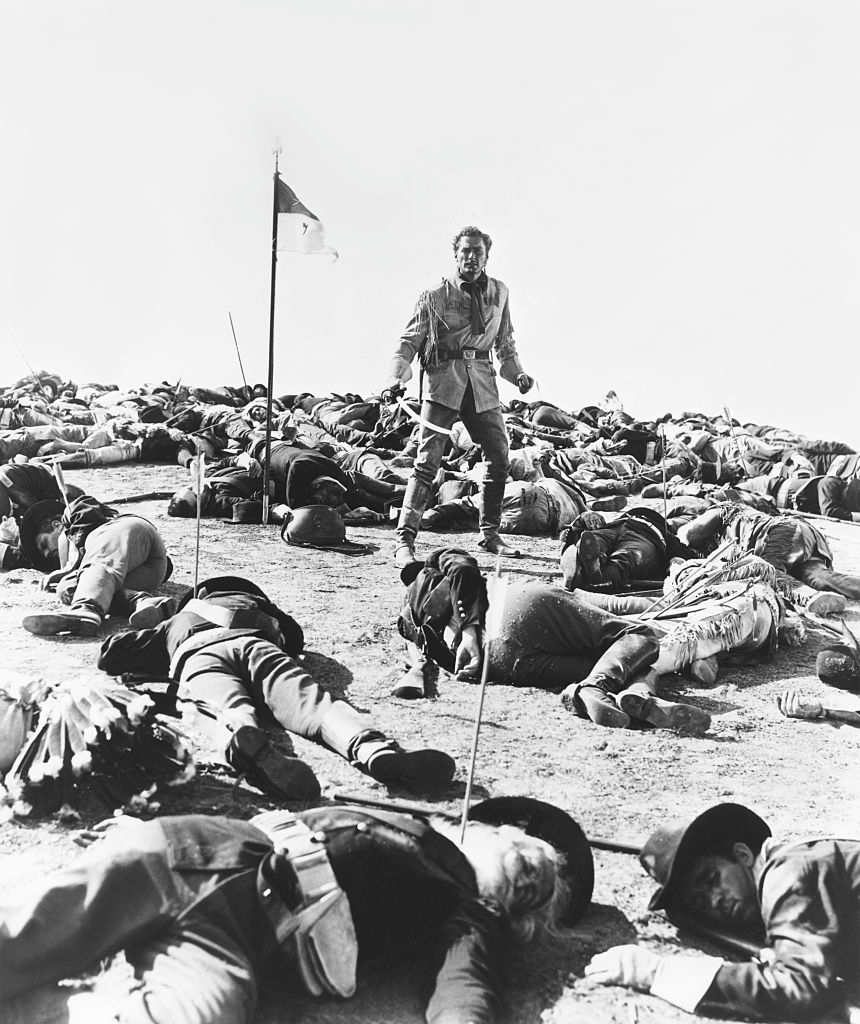
Warner Bros. Pictures / Sunset Boulevard / Corbis via Getty Images
14. But one of the most horrific stuntperson deaths was that of the legendary Dar Robinson, who died in a stunt gone wrong during the filming of 1987's Million Dollar Mystery. He was driving his motorcycle on a mountainside road for a "drive-by" shot when he went off the cliff. He was impaled on a cactus, and it took two hours to even reach him.

Boris Spremo / Toronto Star via Getty Images
15. The conditions on the set of 1938's The Adventures of Robin Hood were extremely dicey, with extras reportedly actually shot with arrows so that it would look more real. They were only given extra padding to protect them, and they were purportedly paid $150 each time they were hit.
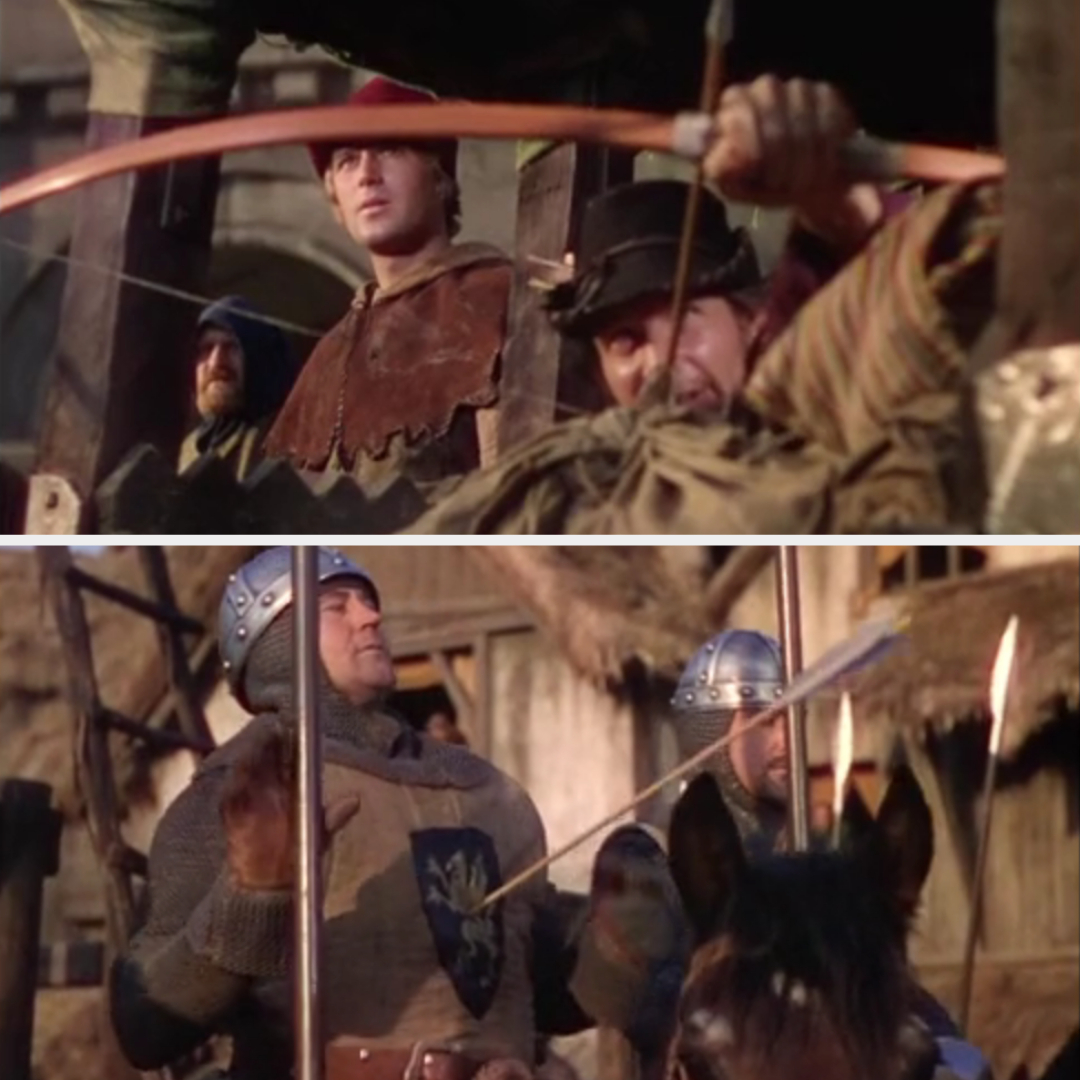
Warner Bros. Pictures
Director Michael Curtiz also apparently removed the guards on the swords during a close-up sword fight scene to make it "more exciting" without telling star Errol Flynn, who was actually jabbed by a real sword.
16. Similarly, real ammunition was used in the 1985 film Come and See, and the actors were shot at with live rounds, with bullets apparently passing inches from their heads.
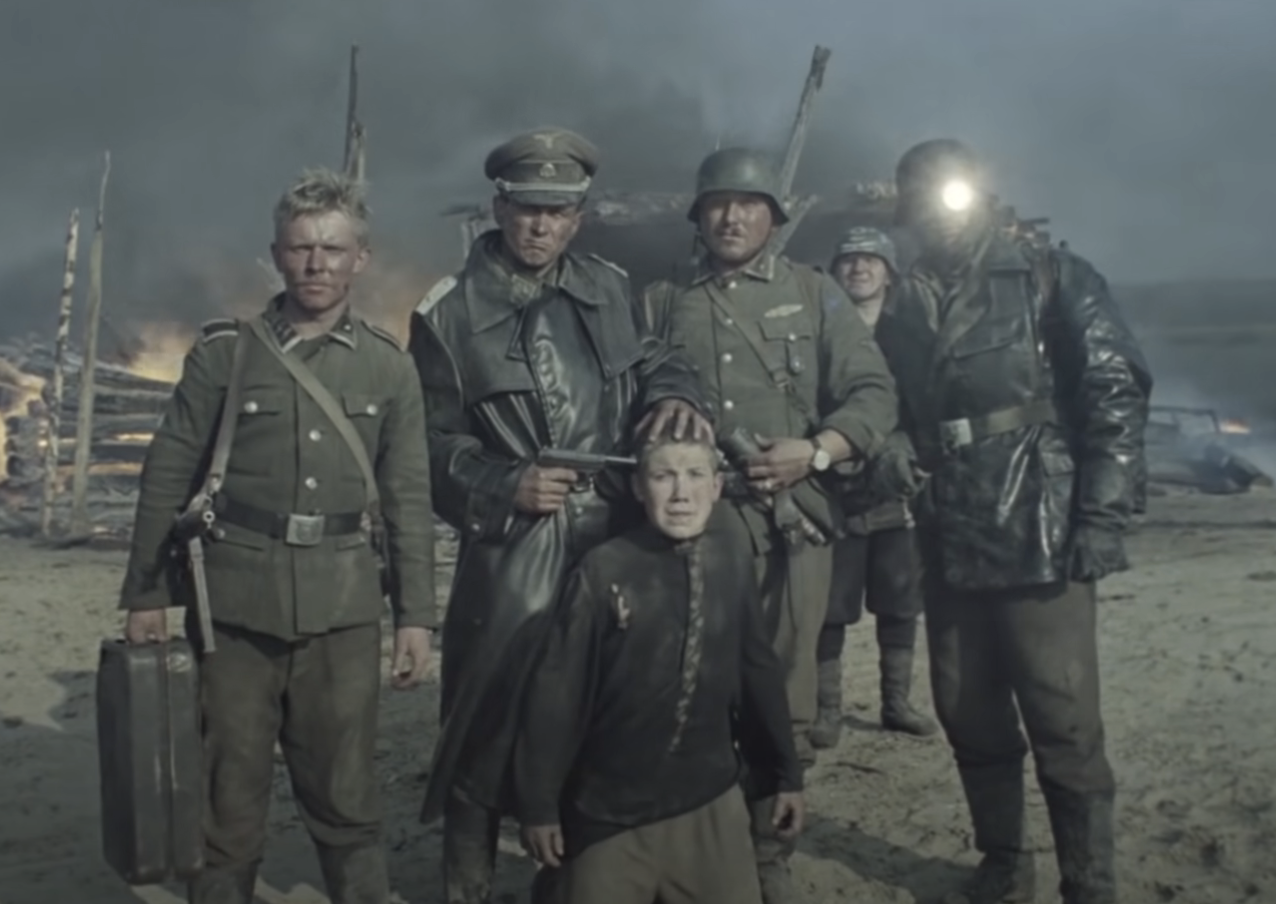
Sovexportfilm
.png)
 1 year ago
6
1 year ago
6










 English (US) ·
English (US) ·